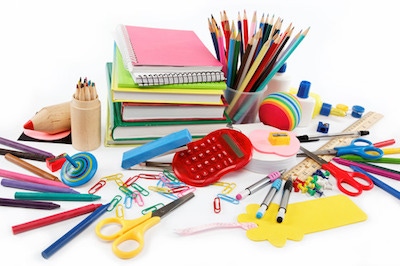NORTH AMERICA- Back-to-college spending is expected to hit an all-time high this year, while back-to-school spending is expected to see its second-highest spending level on record, as consumer confidence rises and college enrollment in the U.S. increases.
April 6, 2018

The influence of children in parent’s back-to-school spending has increased as well.
NORTH AMERICA- Back-to-college spending is expected to hit an all-time high this year, while back-to-school spending is expected to see its second-highest spending level on record, as consumer confidence rises and college enrollment in the U.S. increases.
Total spending for school and college combined is projected to reach $83.6 billion, a more than 10 percent increase from last year’s $75.8 billion, according to the National Retail Federation’s annual survey.
 “Families are now in a state of mind where they feel a lot more confident about the economy,” says Matthew Shay, President and CEO, NRF. “With stronger employment levels and a continued increase in wages, consumers are spending more, and we are optimistic that they will continue to do so throughout the rest of the year.”
“Families are now in a state of mind where they feel a lot more confident about the economy,” says Matthew Shay, President and CEO, NRF. “With stronger employment levels and a continued increase in wages, consumers are spending more, and we are optimistic that they will continue to do so throughout the rest of the year.”
Back-to-School (Elementary-High School)
Families with children in grades K-12 plan to spend an average $687.72 each, for a total of $29.5 billion, an 8 percent increase from last year’s $27.3 billion. Total spending is the second-highest in the history of the survey following a peak of $30.3 billion in 2012.
According to the survey, back-to-school shoppers plan to spend $10.2 billion on clothing (purchased by 95 percent of respondents), $8.8 billion on electronics such as computers or calculators (60 percent), $5.6 billion on shoes (93 percent) and $4.9 billion on school supplies such as notebooks, folders, pencils, backpacks and lunchboxes (97 percent). Parents say they will spend an average of $238.89 on clothing, $204.33 on electronics, $130.38 on shoes and $114.12 on school supplies.
65 percent of back-to-school shoppers say half or more of their purchases are a direct result of their children’s influence, up from 57 percent last year.
More families will tackle their back-to-school lists early this year with 27 percent beginning two months before the beginning of school, up from 22 percent last year. But not all shoppers are early birds, 21 percent will wait until the last week or two before school starts, about the same as last year’s 22 percent.
When it comes to where parents will buy, they are shopping across a variety of retailers; 57 percent will shop at department stores, 54 percent at discount stores, 46 percent each at clothing stores and online, and 36 percent at office supply stores. For those shopping online, 91 percent plan to take advantage of free shipping and 54 percent will buy online and pick up in-store.
Back-to-College
College students and their families plan to spend an average of $969.88, up from last year’s $888.71. Total spending is expected to be $54.1 billion, up from $48.5 billion last year and surpassing 2012’s record of $53.5 billion.
The increase in spending is driven, in part, to growing college enrollment. According to the National Center for Education Statistics, college enrollment has steadily increased over the last five years and is projected to reach nearly 21 million this fall.
College consumers plan to spend $12.8 billion on electronics (purchased by 51 percent), $8.0 billion on clothing (78 percent), $7.5 billion on snacks and other food items (75 percent), $5.9 billion on dorm/apartment furnishings (51 percent), $4.5 billion on shoes (72 percent), $4.5 billion on personal care items (78 percent), $3.9 billion on school supplies (88 percent), $3.9 billion on gift cards (40 percent) and $3.2 billion on branded collegiate gear (56 percent). Households plan to spend an average of $229.20 on electronics, $142.90 on clothing, $134.20 on food, $105.58 on dorm/apartment furnishings, $81.38 on shoes, $81 on personal care items, $70.08 on school supplies, $68.99 on gift cards and $56.57 on branded gear.
Similar to K-12, more back-to-college buyers are shopping early. This year, 32 percent will start two months before school compared with 26 percent last year. And only 21 percent will leave shopping until the last week or two before school starts, down from 25 percent last year.
When it comes to where to shop, 44 percent will go online, 40 percent to discount stores, 39 percent to department stores, 34 percent to college bookstores and 29 percent to office supply stores.
Read more about:
National Retail FederationYou May Also Like






